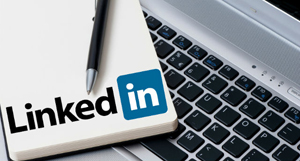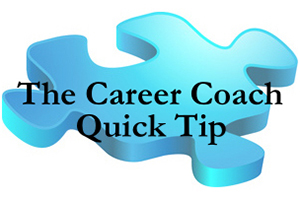 I’m frequently asked by my clients how soon to update their LinkedIn profiles when they are no longer employed. That’s why I read with interest a post from the Wall Street Journal’s “Ask At Work” blog. The question involved how soon after leaving a company should one update their LinkedIn profile, especially in light of a bias by recruiters for people who are currently employed.
I’m frequently asked by my clients how soon to update their LinkedIn profiles when they are no longer employed. That’s why I read with interest a post from the Wall Street Journal’s “Ask At Work” blog. The question involved how soon after leaving a company should one update their LinkedIn profile, especially in light of a bias by recruiters for people who are currently employed.
The answer to me is, it depends. I do believe that honesty is the best policy, but I also believe the world is not black and white and there are extenuating circumstances. For instance, some executives are retained by companies as consultants to ensure a smooth transition, while others are still on the payroll due to their severance packages. In each of those instances you might want to keep the box checked that you’re still with the company. Why, because there is still a bias against people who are unemployed.
This is in opposition to the post. The author refers to Nona K. Footz, managing director of executive recruiting firm RSR Partners. According to Footz, in the past recruiters often passed on candidates who were “on the beach” (A.K.A. out of work). “But the market has changed, and as long as there is a positive story as to why you were let go, you should not be afraid to be transparent with your situation.”
I commend Ms. Footz for being open minded with her recruiting candidates, but have spoken with several recruiters who’ve confided in me that they prefer candidates who are currently employed. While there are some exceptions among recruiters, like Ms. Footz, who understand that the current economic conditions have left some very talented people on the market, for the most part, the bias still exists.
Ms. Footz also says, “it looks worse if a recruiter calls you thinking you’re still at Company X and you have to break the news that you’ve left.” I disagree. The goal is to get the call and once you have the recruiter on the line, you have control over telling your transparent story while building rapport with the recruiter.
The post also suggests that you should update your profile immediately with the information that you are no longer employed so your network can be your eyes and ears and refer jobs to you. However, if you’re actively using LinkedIn (actively being the operative word here), you can still reach out to your network and achieve excellent results.
Finally, should you use the months and years indicating the time you worked or just the years. Again, it depends. Which makes you look more appealing? LinkedIn is your marketing brochure, using either months and years or just the years are both being truthful, but you need to go with whichever tells the better story about you. Remember, its about being honest but also about being smart with the goal of getting the phone to ring.
~Linda


